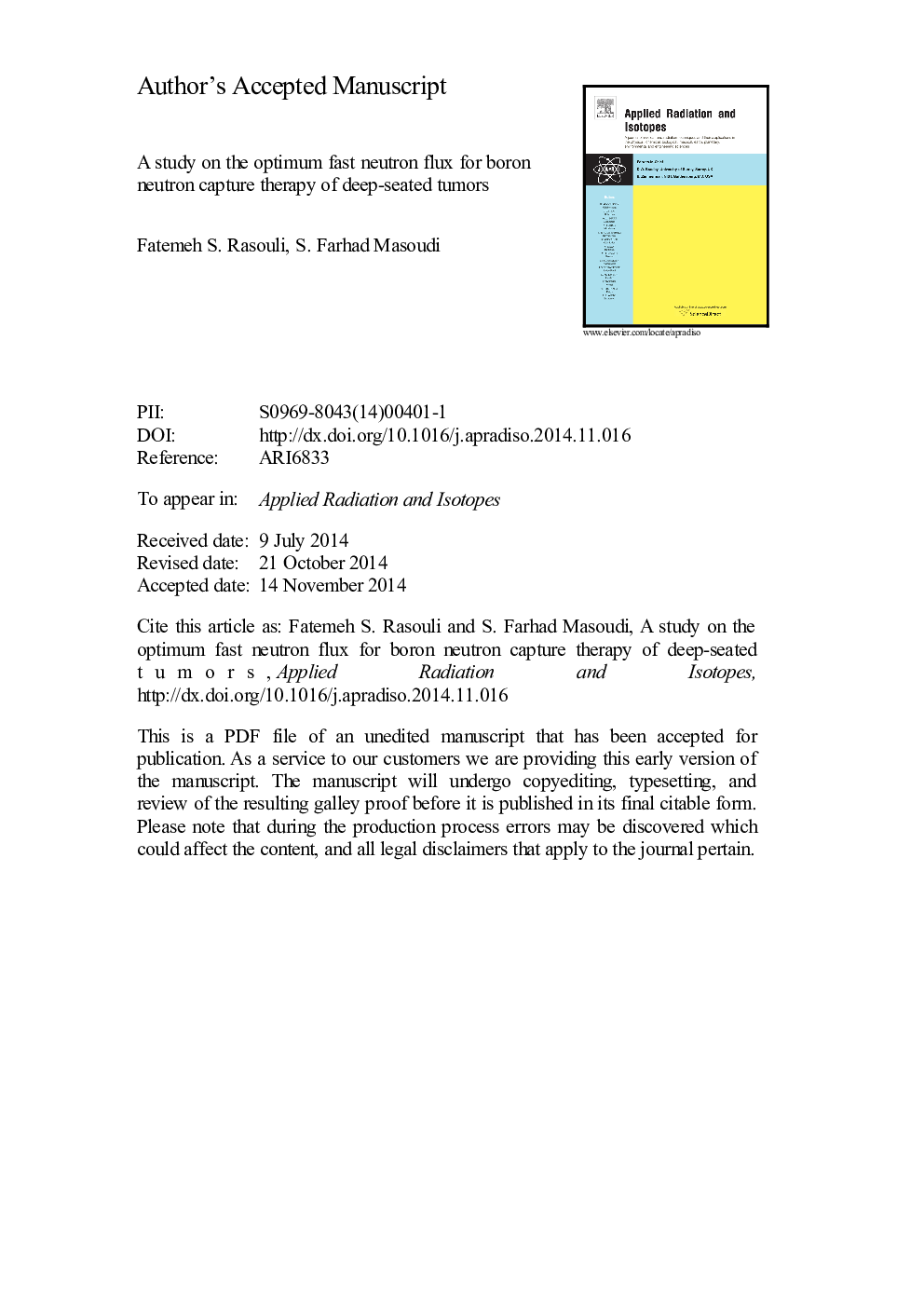| Article ID | Journal | Published Year | Pages | File Type |
|---|---|---|---|---|
| 8209799 | Applied Radiation and Isotopes | 2015 | 22 Pages |
Abstract
This simulation study deals with the determination of the optimum contribution of fast neutron flux in the beam for BNCT of deep-seated tumors. Since the dose due to these high-energy neutrons damages shallow tissues, delivered dose to skin is considered as a measure for determining the acceptability of the designed beam. To serve this purpose, various beam shaping assemblies that result in different contribution of fast neutron flux are designed. The performances of the neutron beams corresponding to such configurations are assessed in a simulated head phantom. It is shown that the previously used criterion, which suggests a limit value for the contribution of fast neutrons in beam, does not necessarily provide the optimum condition. Accordingly, it is important to specify other complementary limits considering the energy of fast neutrons. By analyzing various neutron spectra, two limits on fast neutron flux are proposed and their validity is investigated. The results show that considering these limits together with the widely accepted IAEA criteria makes it possible to have a more realistic assessment of sufficiency of the designed beam. Satisfying these criteria not only leads to reduction of delivered dose to skin, but also increases the advantage depth in tissue and delivered dose to tumor during the treatment time. The Monte Carlo Code, MCNP-X, is used to perform these simulations.
Keywords
Related Topics
Physical Sciences and Engineering
Physics and Astronomy
Radiation
Authors
Fatemeh S. Rasouli, S. Farhad Masoudi,
